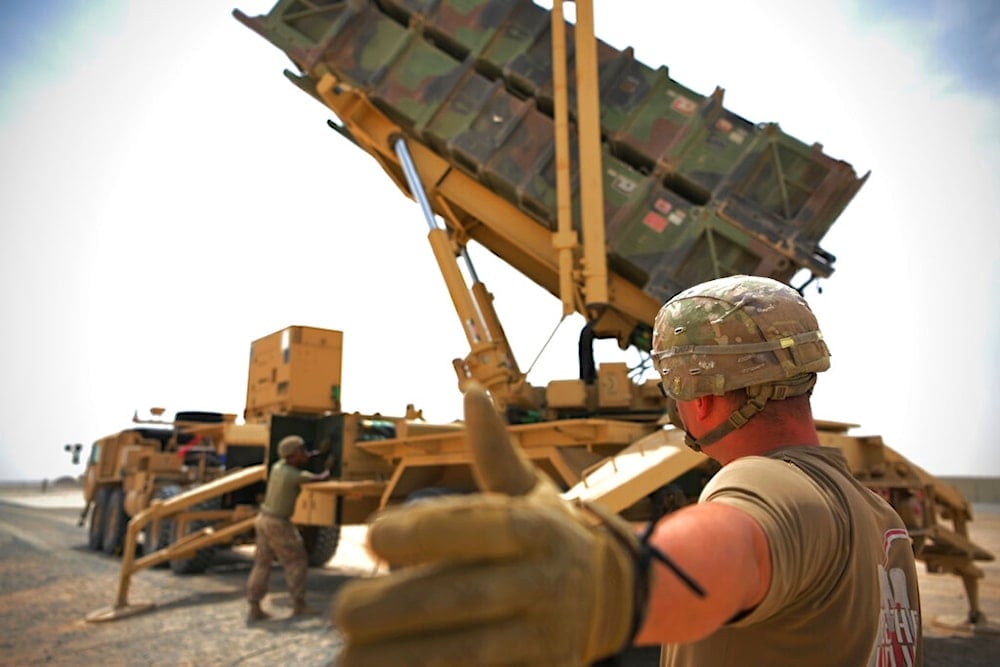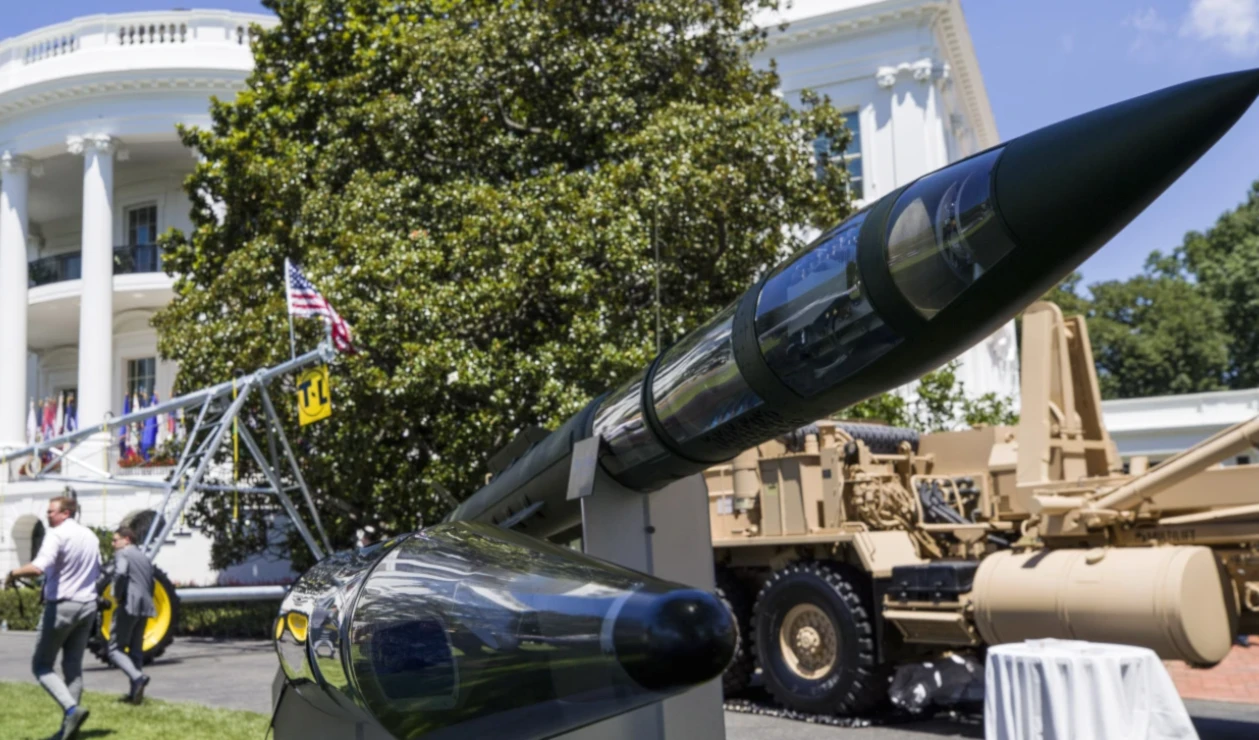US Army to expand Patriot missile force, adds Guam defense unit
The US Army plans to expand its active Patriot missile battalions from 15 to 18 and establish a separate advanced air defense unit in Guam.
-

In this photo released by the US Air Force, US Army Spc. Scottlin Bartlett of the 5-52 Air Defense Artillery Battalion signals to a colleague while working near a Patriot missile battery at Al-Dhafra Air Base in Abu Dhabi, United Arab Emirates, May 5, 2021. (AP)
The US Army is moving ahead with plans to expand its Patriot missile defense capabilities, with intentions to field up to 18 active battalions, up from the current 15, according to a report by Defense News on Monday, citing an army spokesperson.
The decision comes amid mounting operational pressures and an urgent need to modernize missile defense infrastructure. Several Patriot units have remained deployed for over 500 consecutive days, underscoring the strain on personnel and equipment. The expansion also reflects broader concerns about global instability and the growing sophistication of aerial threats, including from adversaries capable of launching cruise missiles, ballistic missiles, and drones.
Originally, the Army intended to add only one more battalion in 2023. However, Vice Chief of Staff General James Mingus recently confirmed that the goal has expanded to "up to four" additional battalions, an acknowledgment of the Army’s overstretched capacity and the demand for layered defenses across multiple theaters.
Guam shield
As part of this modernization initiative, the Army is establishing a dedicated air defense battalion to safeguard the strategic US territory of Guam. This unique unit will integrate Patriot missile systems with the Integrated Fire Protection Capability (IFPC), specifically designed to intercept drones, cruise missiles, and short-range projectiles. It will also be equipped with the Integrated Battle Command System (IBCS) and the new Lower-Tier Air and Missile Defense Sensor (LTAMDS), offering full 360-degree radar coverage and improved sensor fusion.
An army spokesperson noted that "the battalion was specifically designed to defend Guam and is not included in the total count of 18 Patriot battalions." Instead, it represents a next-generation composite formation, optimized for island-based threat environments and multi-domain operations.
Technology integration and missile shortages
Every new Patriot battalion will feature LTAMDS and IBCS as standard, part of a sweeping upgrade that enables seamless coordination between THAAD, NASAMS, and legacy Patriot platforms. This interoperability forms a unified kill chain across US and allied missile defense systems, crucial in light of evolving threats and dispersed operational demands.
However, the expansion comes amid a critical shortfall in Patriot interceptor missiles. Pentagon assessments reveal that US stockpiles currently cover only about 25% of projected operational requirements. This shortage is largely due to high usage in both the Middle East and Europe, as well as sustained support for allies like "Israel" and Ukraine. During recent Iranian missile strikes, large numbers of Patriot interceptors were used to shield Israeli and US forces, contributing to the depletion of inventory.
Deliveries to "Israel" in particular have come under scrutiny, with internal Pentagon reviews assessing the impact of outbound munitions on US readiness. The Department of Defense has even temporarily halted some shipments to Ukraine to preserve its dwindling supply. In response, the Army is seeking to quadruple production of PAC-3 MSE interceptors as part of its FY2026 budget request.
Strategic outlook
Defense officials describe the Patriot system’s transformation as critical to US deterrence posture, particularly in the Indo-Pacific. Army Secretary Daniel Driscoll recently referred to Patriot operators as the "new tip of the spear," emphasizing their expanding role in both homeland and forward defense.
With LTAMDS in low-rate production and IBCS integration accelerating, the army’s growing fleet of Patriot battalions, complemented by specialized formations like Guam’s, is poised to become a cornerstone of 21st-century air and missile defense strategy.

 4 Min Read
4 Min Read










